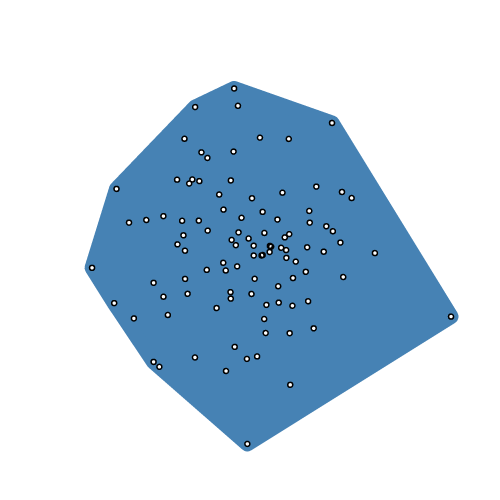|
|
6 years ago | |
|---|---|---|
| .. | ||
| build | 6 years ago | |
| img | 6 years ago | |
| src | 6 years ago | |
| .eslintrc | 6 years ago | |
| .npmignore | 6 years ago | |
| LICENSE | 6 years ago | |
| README.md | 6 years ago | |
| index.js | 6 years ago | |
| package.json | 6 years ago | |
README.md
d3-polygon
This module provides a few basic geometric operations for two-dimensional polygons. Each polygon is represented as an array of two-element arrays [[x1, y1], [x2, y2], …], and may either be closed (wherein the first and last point are the same) or open (wherein they are not). Typically polygons are in counterclockwise order, assuming a coordinate system where the origin ⟨0,0⟩ is in the top-left corner.
Installing
If you use NPM, npm install d3-polygon. Otherwise, download the latest release. You can also load directly from d3js.org, either as a standalone library or as part of D3 4.0. AMD, CommonJS, and vanilla environments are supported. In vanilla, a d3 global is exported:
<script src="https://d3js.org/d3-polygon.v1.min.js"></script>
<script>
var hull = d3.polygonHull(points);
</script>
Try d3-polygon in your browser.
API Reference
Returns the signed area of the specified polygon. If the vertices of the polygon are in counterclockwise order (assuming a coordinate system where the origin ⟨0,0⟩ is in the top-left corner), the returned area is positive; otherwise it is negative, or zero.
# d3.polygonCentroid(polygon) <>
Returns the centroid of the specified polygon.
Returns the convex hull of the specified points using Andrew’s monotone chain algorithm. The returned hull is represented as an array containing a subset of the input points arranged in counterclockwise order. Returns null if points has fewer than three elements.
# d3.polygonContains(polygon, point) <>
Returns true if and only if the specified point is inside the specified polygon.
# d3.polygonLength(polygon) <>
Returns the length of the perimeter of the specified polygon.
